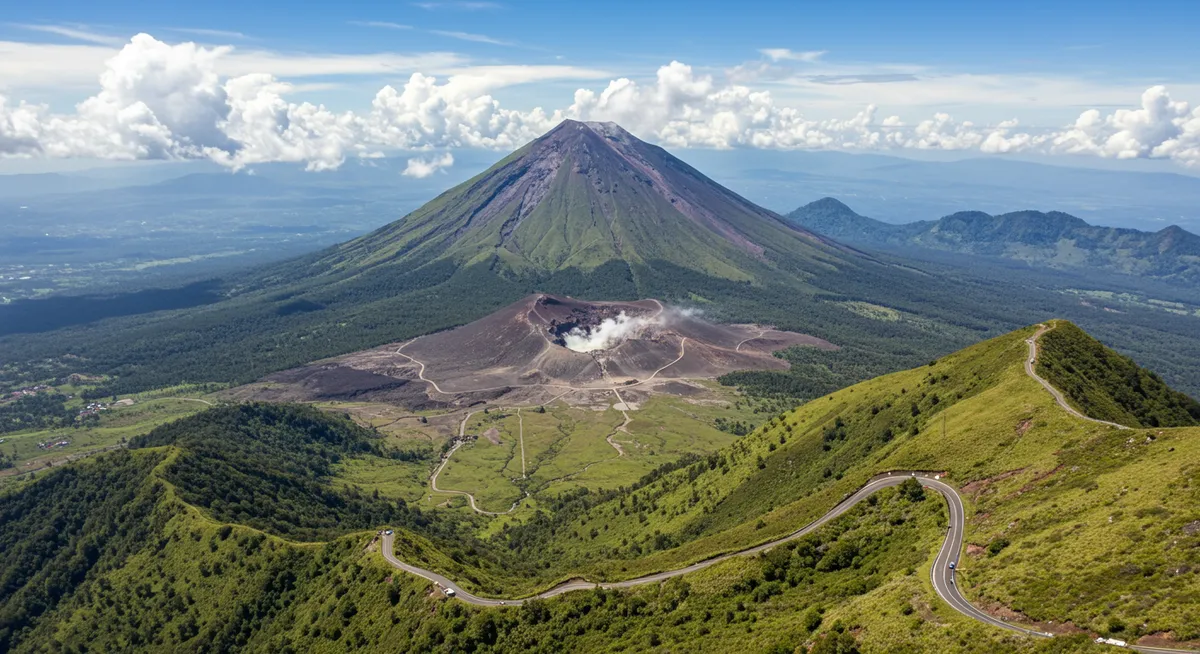
Tangkuban Perahu Volcano: Your Bandung Guide
Table of Contents
Want to find the best travel deals for this destination? Chat with our travel hacking specialist!
Get Travel HacksCategory: tangkuban-perahu-volcano-what-to-expect-and-how-to-get-there
Tangkuban Perahu Volcano: Expectation & Access Guide
Having personally explored the geothermal wonders of Southeast Asia, including the captivating landscapes around Bandung, I can attest that a visit to Tangkuban Perahu Volcano is an absolute must-do for any traveler seeking a unique natural spectacle. This active stratovolcano, located just north of Bandung, Indonesia, offers a dramatic glimpse into the Earth's raw power and a chance to experience its vibrant, albeit sulfurous, breath. Our comprehensive guide will help you navigate your journey to this iconic site, ensuring you know exactly what to expect and how to maximize your visit to this incredible volcanic attraction. For more travel inspiration, explore our main site at Plan Vacation Asia.
Getting to Tangkuban Perahu Volcano from Bandung
Reaching Tangkuban Perahu Volcano from Bandung is straightforward, with several transport options available to suit your preference and budget. Many visitors opt for a private car or taxi, which offers the most convenience and flexibility, allowing you to stop at various points of interest along the way. Alternatively, you can hire an angkot (local public minivan) or join a guided tour package, often arranged through local hotels. Personally, I found hiring a private driver to be the most relaxing option, especially if traveling with family. The journey typically takes 1.5 to 2 hours, depending on traffic, leading you through scenic tea plantations. For comprehensive planning, consult our Bandung travel guide.
Exploring the Craters: What Awaits You
Upon arrival at Tangkuban Perahu, you'll be greeted by the dramatic panorama of its primary crater, Kawah Ratu. This impressive caldera, often shrouded in a thin veil of sulfuric mist, offers a truly otherworldly experience. You can walk along the rim, taking in the vastness of the volcanic landscape. Don't miss Kawah Domas, a smaller, more accessible crater where you can often boil eggs in the hot springs or enjoy a sulfuric mud bath. The pervasive sulfur smell is characteristic of this active volcano, a reminder of the raw geological forces at play. This natural wonder is certainly one of the top things to do in Bandung.
Best Time to Visit Tangkuban Perahu Volcano
Choosing the right time to visit Tangkuban Perahu Volcano can significantly enhance your experience. The dry season, typically from April to October, is generally recommended, offering clearer skies and better visibility of the craters. However, even during this period, morning visits are preferable to avoid afternoon mist and potential crowds. I always aim to arrive just as the gates open; the crisp morning air and fewer visitors make for a more serene experience. The early hours also reduce the chance of encountering rain, which is common in the afternoons, especially during the wet season. For more detailed insights, check our guide on the best time to visit Bandung.
Practical Tips for a Smooth Tangkuban Perahu Trip
To ensure a comfortable and enjoyable visit to Tangkuban Perahu, a few practical tips are essential. Wear comfortable walking shoes, as paths can be uneven, and bring layers of clothing since temperatures at the summit are cooler than in Bandung. A mask or scarf can help with the sulfur smell, and certainly carry small denominations of Rupiah for local vendors. Be mindful of local guides who might approach you; while some are legitimate, always negotiate prices clearly beforehand. My personal recommendation is to carry a refillable water bottle to stay hydrated during your Bandung adventure. For integration into a longer trip, consider our Bandung itinerary.
Frequently Asked Questions
What are the entry fees for Tangkuban Perahu Volcano?
Is Tangkuban Perahu Volcano safe to visit?
How much time should I allocate for a visit to Tangkuban Perahu?
Exploring Tangkuban Perahu Volcano offers a memorable escape into Bandung's stunning natural landscapes. By understanding what to expect, planning your transportation, and following essential tips, you can ensure a smooth and enriching visit to this iconic stratovolcano. Its dramatic craters and geothermal activity provide a unique insight into Indonesia's powerful geological heritage. Don't miss this opportunity to witness one of Bandung's most captivating natural wonders, an experience that truly highlights the raw beauty of our planet. Prepare for an unforgettable journey into the heart of Java's volcanic allure!